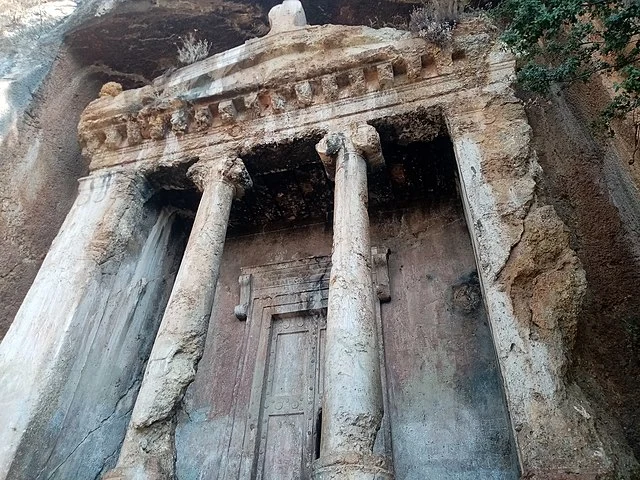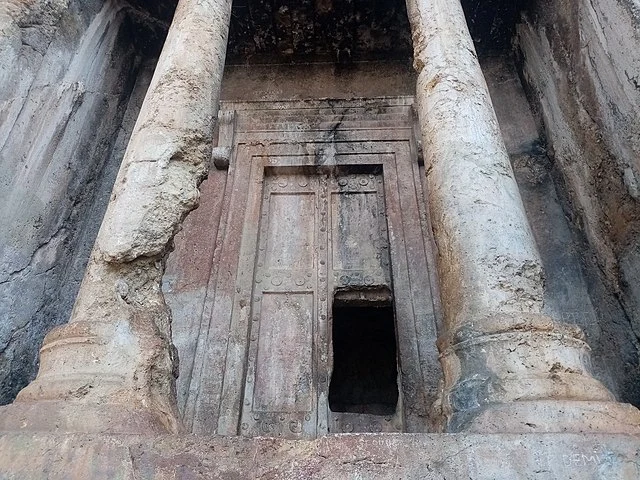The Tomb of Amyntas, located in Fethiye, Turkey, stands as one of the most remarkable relics of ancient Lycia. Carved into a steep cliff, this rock-cut tomb is believed to date back to the 4th century BC, making it over 2,300 years old. Its striking facade, resembling a classical Greek temple, reflects the influence of Hellenistic culture on the Lycian people.
Get your dose of History via Email
Historical Context

Lycia, an ancient region in southwestern Anatolia, was known for its unique funerary architecture. The Lycian civilization thrived during the first millennium BC, and their tombs, especially rock-cut tombs, are some of the most enduring symbols of their culture. The Tomb of Amyntas, named after the inscription on the facade that reads “Amyntou tou Ermagiou,” meaning “Amyntas, son of Hermagios,” is one of the most famous examples.
Architectural Features

The Tomb of Amyntas is a monumental structure, featuring a portico with two Ionic columns supporting a pediment. This design is characteristic of Lycian tombs, which often combined local traditions with Greek architectural elements. The facade measures about 8.5 meters in height, making it one of the largest tombs in the region.
The tomb’s interior consists of a single chamber, accessible through a small doorway. Inside, the chamber is relatively plain, contrasting with the elaborate exterior. The simplicity of the interior suggests that the tomb was meant to serve as a lasting monument to the deceased, rather than as a lavish burial chamber.
Cultural Significance
The Tomb of Amyntas is not just an architectural marvel; it also provides insight into the cultural and social dynamics of ancient Lycia. The prominence of the tomb suggests that Amyntas was a person of considerable importance, likely a local ruler or a wealthy individual. The fusion of Lycian and Greek elements in the tomb’s design reflects the cultural interactions between these two civilizations during the Hellenistic period.
Preservation and Legacy
Over the centuries, the Tomb of Amyntas has withstood the test of time, remaining a significant landmark in the region. Its location, high on a cliff, has helped protect it from natural and human-induced damage. However, like many ancient structures, it faces challenges from weathering and tourism-related activities.
Today, the Tomb of Amyntas is a popular tourist attraction, drawing visitors from around the world who are fascinated by its historical and architectural significance. Efforts are ongoing to preserve this ancient monument for future generations.
Conclusion
The Tomb of Amyntas is a testament to the rich cultural heritage of ancient Lycia. Its blend of Lycian and Greek architectural styles offers a glimpse into the past, revealing the complex interactions between different cultures in the ancient world. As one of the most well-preserved examples of Lycian funerary architecture, the Tomb of Amyntas continues to captivate historians, archaeologists, and visitors alike.
Source:

